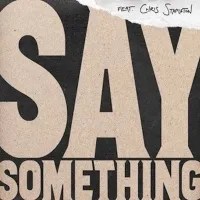
 For a while, radio programmers weren’t supposed to care much about what happened on their radio station at the top of the hour, or attach any particular importance to it. Listeners, after all, could come aboard at any point during the hour; they weren’t all getting in their cars at 6:59 a.m. or 4:59 p.m. Even using the words “top of the hour” was an anachronism.
For a while, radio programmers weren’t supposed to care much about what happened on their radio station at the top of the hour, or attach any particular importance to it. Listeners, after all, could come aboard at any point during the hour; they weren’t all getting in their cars at 6:59 a.m. or 4:59 p.m. Even using the words “top of the hour” was an anachronism.
Then came the studio sponsorships. Then the group owners’ own tags — particularly the iHeart or Audacy app plugs. Then :00 became the focal point of national contesting (even those stations that give a keyword elsewhere during the hour often tease to it at :00). The top of the hour, by necessity, became a station’s policy statement again.
We haven’t yet attached the same importance to what we play at the top of the hour; that one is still part of the old didacticism for many PDs. Sometimes the song that follows the :00 ID keeps the energy going. Sometimes it’s “Creepin’” or “Saturn.”
Now that it’s OK to talk about what happens at :00 again, I’d like to talk about what happens next at :03. Specifically, whether the on-air personality does a break, or waits for the third song or even longer. I sometimes hear first breaks of the hour that don’t come until nearly 20 minutes in. By that time, I’m not sure if I’ve tuned into a hosted hour or not. And I’m listening to radio for relatively long stretches. For a listener who has come to the station for a code word at :00, the now-typical nine-minute listening occasion may not include a host.
For some stations, the response to the bombast of :00 is for the next song to be preceded by a calls-only sweeper or something low-key. I like hearing the personality as soon as possible because it keeps up the momentum. Not hearing a jock for another 10 minutes feels to me like the station is untended. While no non-industry listener is likely to articulate it this way, it still feels like inviting a crowd into a store with no salespeople on the floor.
Recently, I went back and looked at the notes from my radio listening in recent weeks and noticed a pattern. A station that led earlier with personalities was often a station doing more of the other things I liked: making me smile, advocating for the music, giving me some sense of the market. The station that brought the host on at :20 was more likely to sound more canned, less connected to the music. It was the station where I was more likely to hear about yesterday’s celebrity news, randomly inserted between songs.
Sometimes, bringing the host on at :03 means there will be more content throughout the hour. WHYA (Y101) Cape Cod, Mass., middayer Billy Teed, featured in a recent Ross on Radio listening roundup, did talk over every other song. More often, it might portend that a station will have 5-6 jock breaks that hour, rather than just four. Either way, the personality feels like more of a presence.
I often listen to stations at 10 a.m., as soon as I can hear the regular day’s pacing instead of mornings. The first jock content I hear might be the “handshake break.” Teed thanked the audience for the opportunity to “work together.” Sometimes it’s still a billboard for three upcoming songs. That can sound rote, but WOBM Monmouth/Ocean, N.J.’s Chelsea Corrine made me smile when she teased a (non-Christmas) Mariah Carey song and added, “It’s almost Mariah’s time!” Sometimes the :03 break is to repeat the hourly keyword, although there are just as many stations where I hear nothing until the next keyword.
Just as often, I hear about anything in the first break of the hour: something about the artist playing, a setup for an upcoming longer topical bit, a teaser for a local contest — the one you’re more likely to hear about during the course of the hour. It would be a return to an old didacticism to prescribe content more precisely. If you have six breaks an hour, I have an idea about what to talk about. But I’m not hung up on the order.
Over the last two years, broadcasters have come to understand personality as their point of differentiation. It has been gratifying, even in recent weeks, to encounter a little more personality that does not sound like generic, randomly inserted content. (At the same time, coming across a major-market station that does sound generic, or is jockless at random hours, rankles even more now.) How a station places its jock breaks only seems arcane; it’s a matter of making our calling card work better for us.
